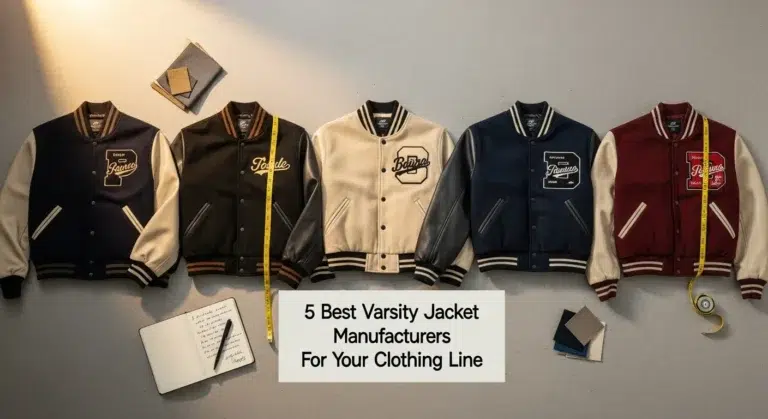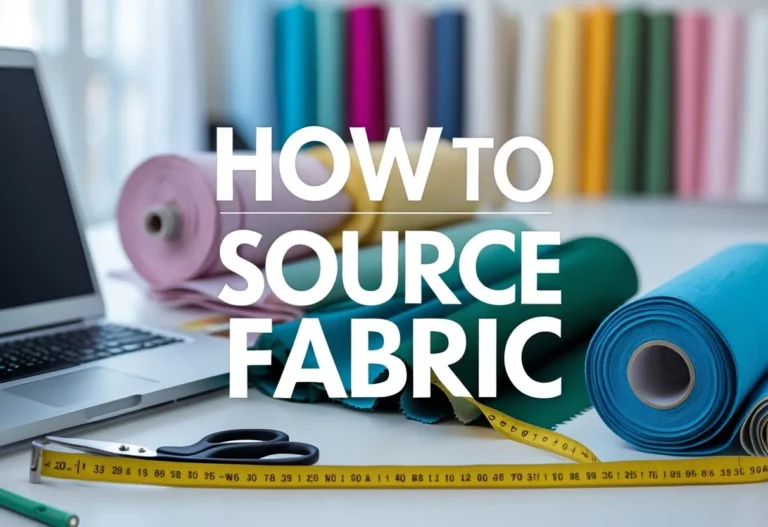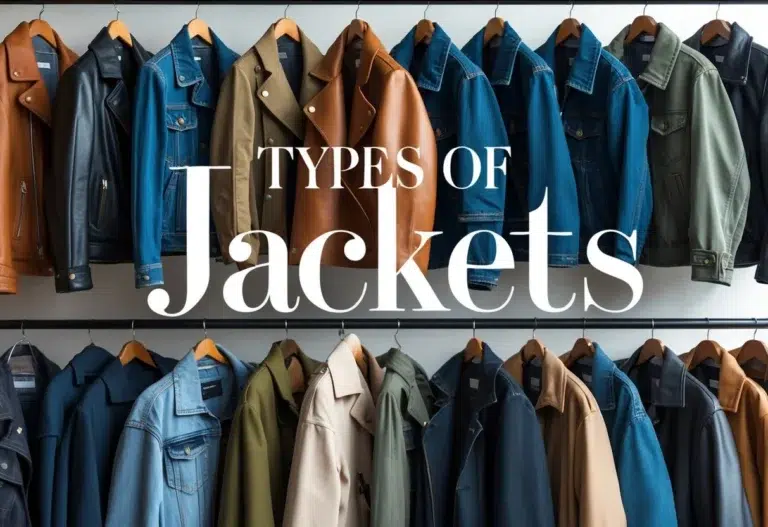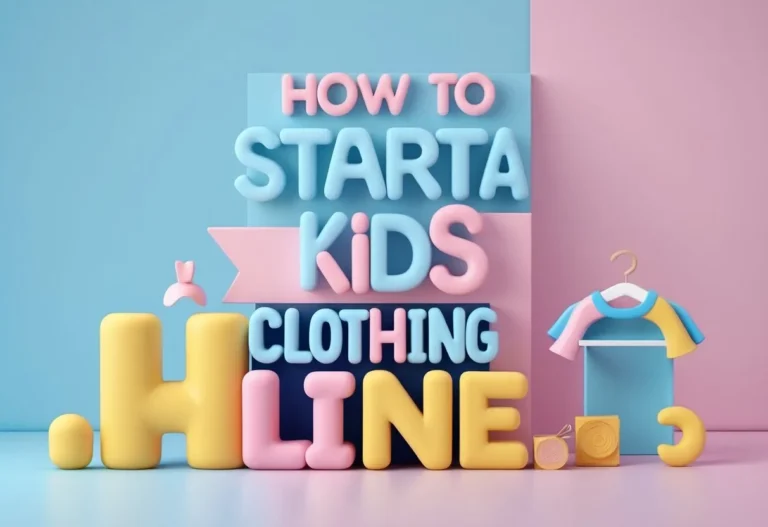11 Types of Panties :Clear Guide to Styles and Fits
Panties come in many different styles, each designed to meet various needs for comfort, fit, and occasion. Choosing the right type can make a big difference in how clothes look and feel.
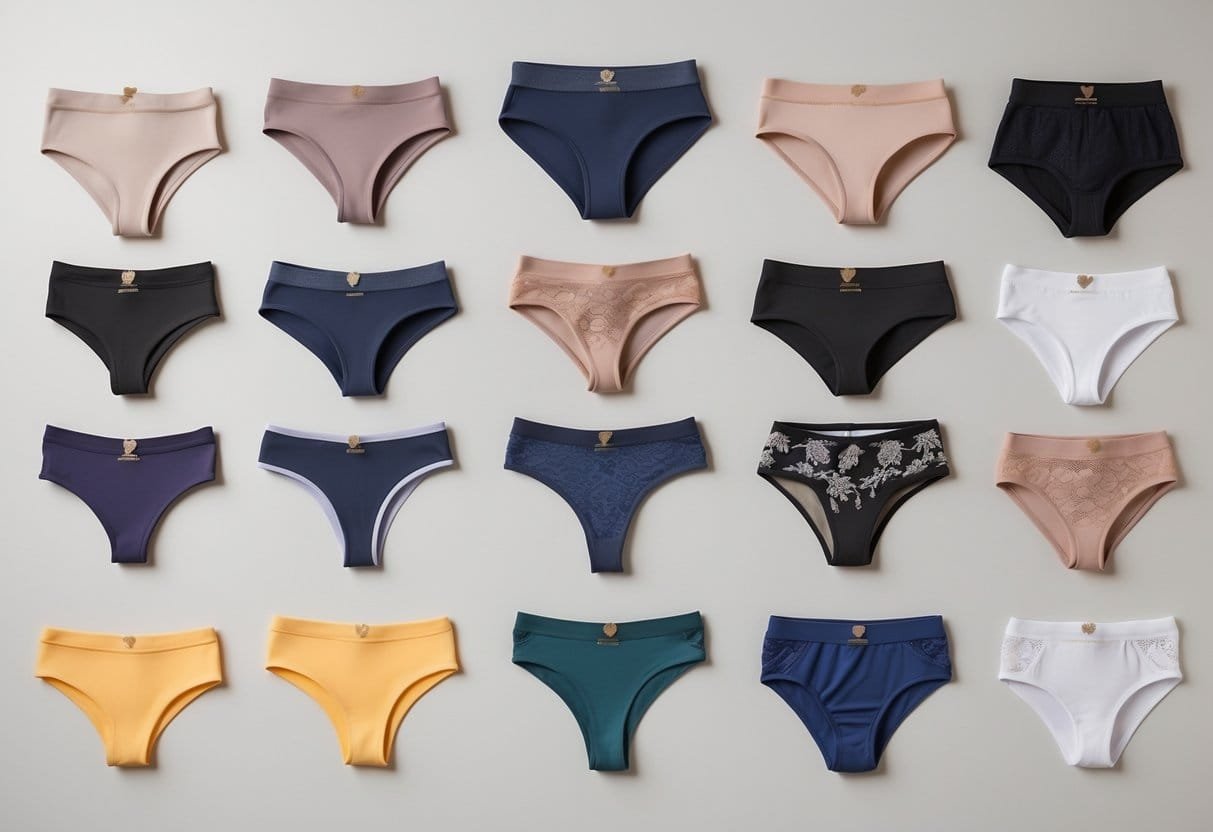
Understanding the common types of panties helps individuals build a versatile underwear collection suited to their body and lifestyle. This article will introduce 11 popular styles, explaining their basic features and uses.
1) Briefs
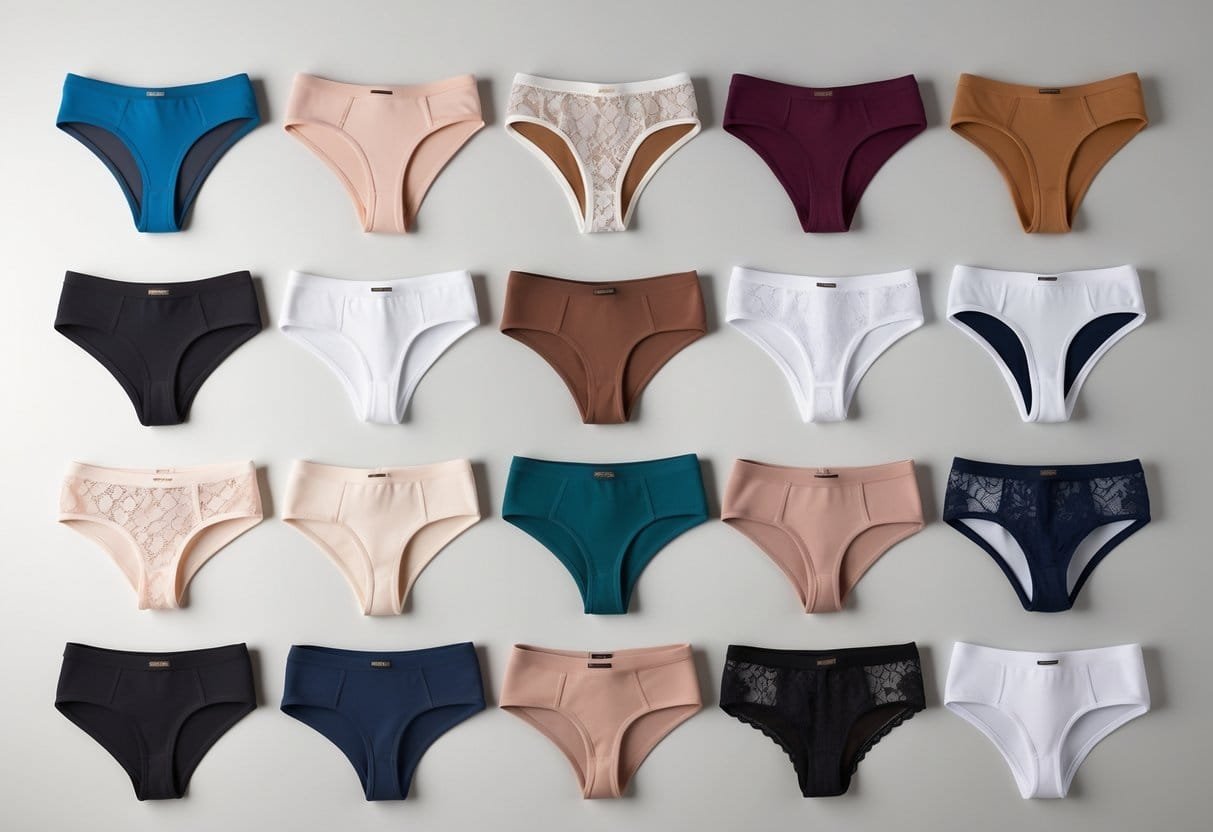
Briefs are one of the most classic and popular styles of panties. They offer full coverage in the back and have a low-rise waistband. This design helps keep the underwear hidden under most pants and skirts.
The leg openings are low, providing comfort without riding up. Briefs taper slightly in the front, giving a neat and supportive fit. They are known for combining support with comfort.
People often choose briefs for everyday wear. They work well with many types of outfits, including jeans, dresses, and skirts. Because of their coverage and support, briefs are a practical choice for those who want simple, reliable underwear.
2) Bikini Panties
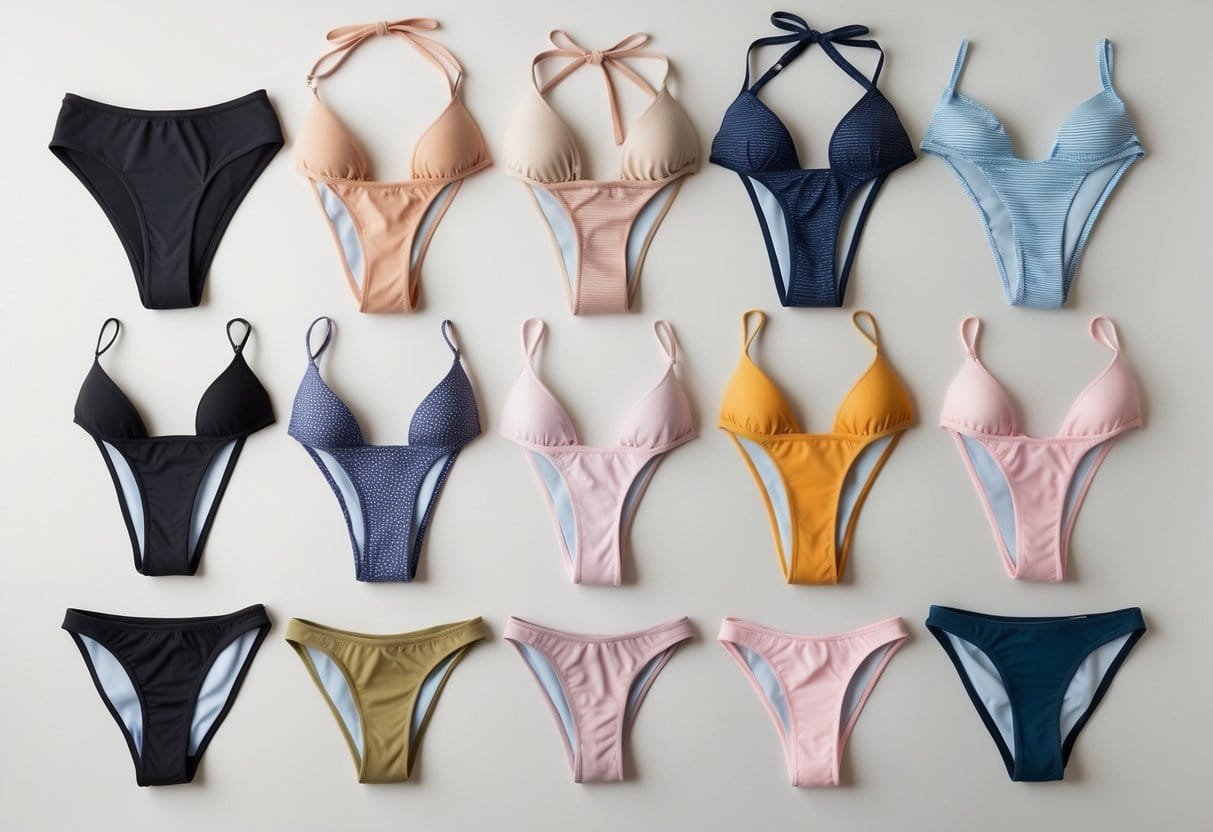
Bikini panties are a popular style that offers moderate coverage. They sit low on the hips and have a cut that is higher on the legs compared to briefs. This design balances comfort with a flattering shape.
They work well under many types of clothing like jeans, skirts, and dresses. Their fit suits various body shapes, often enhancing natural curves without adding bulk.
Bikini panties come in many fabrics, from cotton to lace. This variety makes them a versatile choice for everyday wear or special occasions.
The style dates back to the 1960s and remains a classic staple in many wardrobes. It suits those who want both style and comfort in their underwear.
3) Boyshorts

Boyshorts are a type of women’s underwear that offer more coverage than many other styles. They have a straight cut across the thigh and sit low on the hips, similar to men’s boxer briefs but designed to fit a woman’s body.
This style covers the entire backside, making it a practical choice for comfort and modesty. The longer leg length helps prevent chafing, which can be useful during physical activities like hiking or yoga.
Boyshorts are often made from soft, breathable fabrics like cotton, which adds to their comfort. They provide moderate support without feeling tight or restrictive.
Many wearers appreciate boyshorts for everyday use because they combine coverage with a flattering fit. They can work well under various types of clothing, including skirts and pants, without showing panty lines.
Boyshorts come in different fabrics, cuts, and designs, making them adaptable for both casual wear and workouts. Their support and comfort make them a popular choice among women who want practical yet stylish underwear.
4) Thong
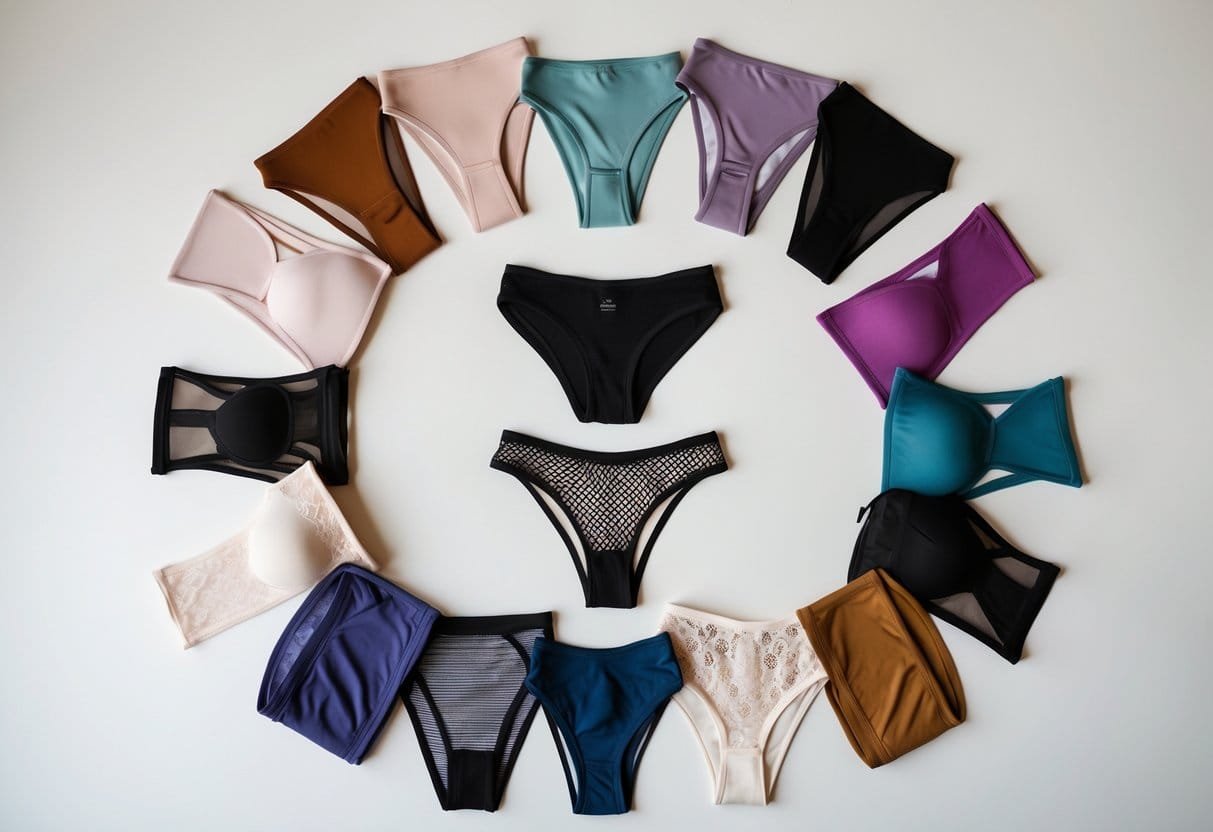
A thong is a type of underwear that offers minimal coverage. It has a thin waistband, a small front panel, and a narrow strip of fabric at the back that sits between the buttocks.
This design helps prevent visible panty lines under tight or thin clothing. Many people choose thongs for outfits like leggings, dresses, or slim pants.
Thongs come in different styles, such as classic thong, G-string, and tanga. Each style varies slightly in coverage and fit, but all share the goal of reducing panty lines.
They are made from a variety of fabrics like cotton, lace, or mesh, offering options for comfort or style. Some thongs include added details like lace or embroidery for a decorative touch.
Thong underwear is well suited for anyone who wants a sleek look without extra fabric showing through clothes.
5) G-String
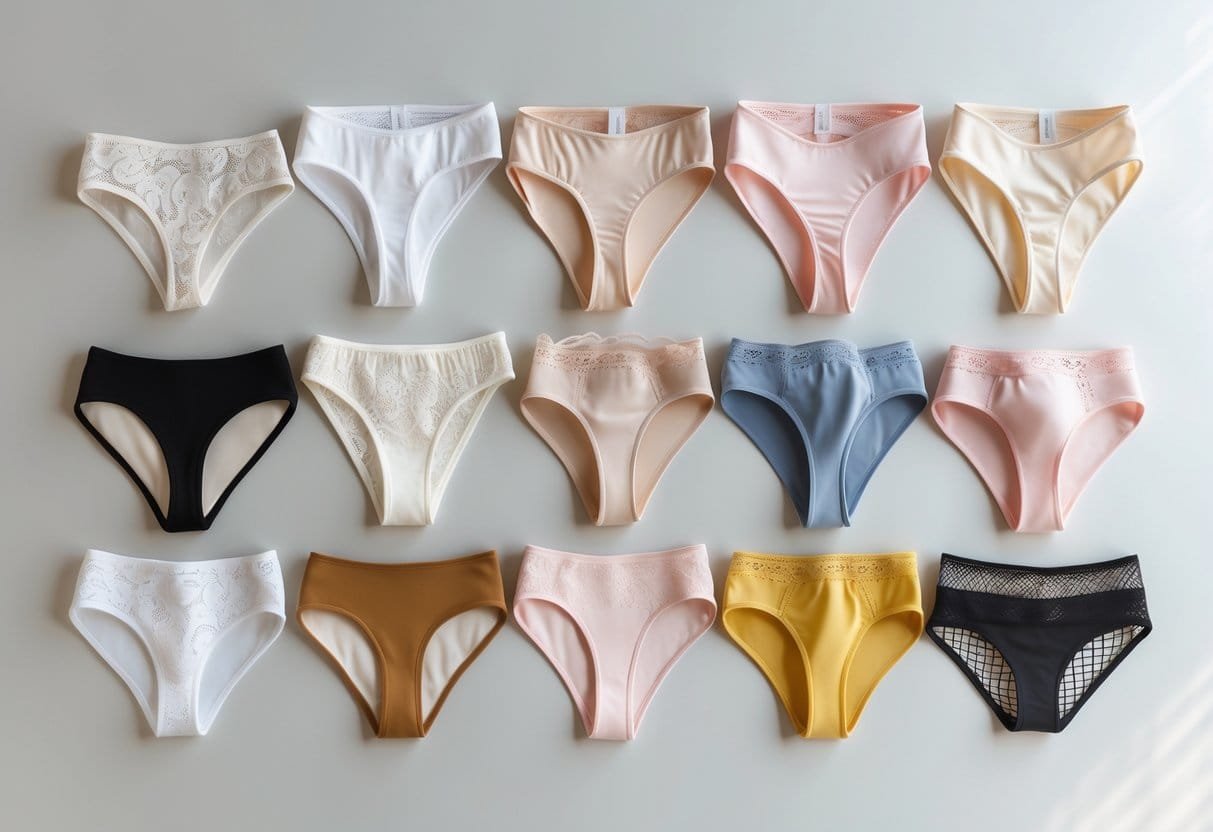
A G-string is a very minimal type of panty. It has very little fabric in the back, usually just a thin string connecting the front part to the waistband.
This style offers almost no coverage at the rear. It is often chosen for its ability to avoid visible panty lines under tight clothing.
G-strings can be made from many materials, such as cotton, lace, or satin. This variety allows for both comfort and style depending on the wearer’s needs.
Some people find G-strings comfortable because of their light feel. Others wear them for special occasions or with certain outfits.
Overall, a G-string is a practical choice when minimal coverage and no panty lines are desired. It is one of the most daring and sleek underwear styles available.
6) High-Waist Panties
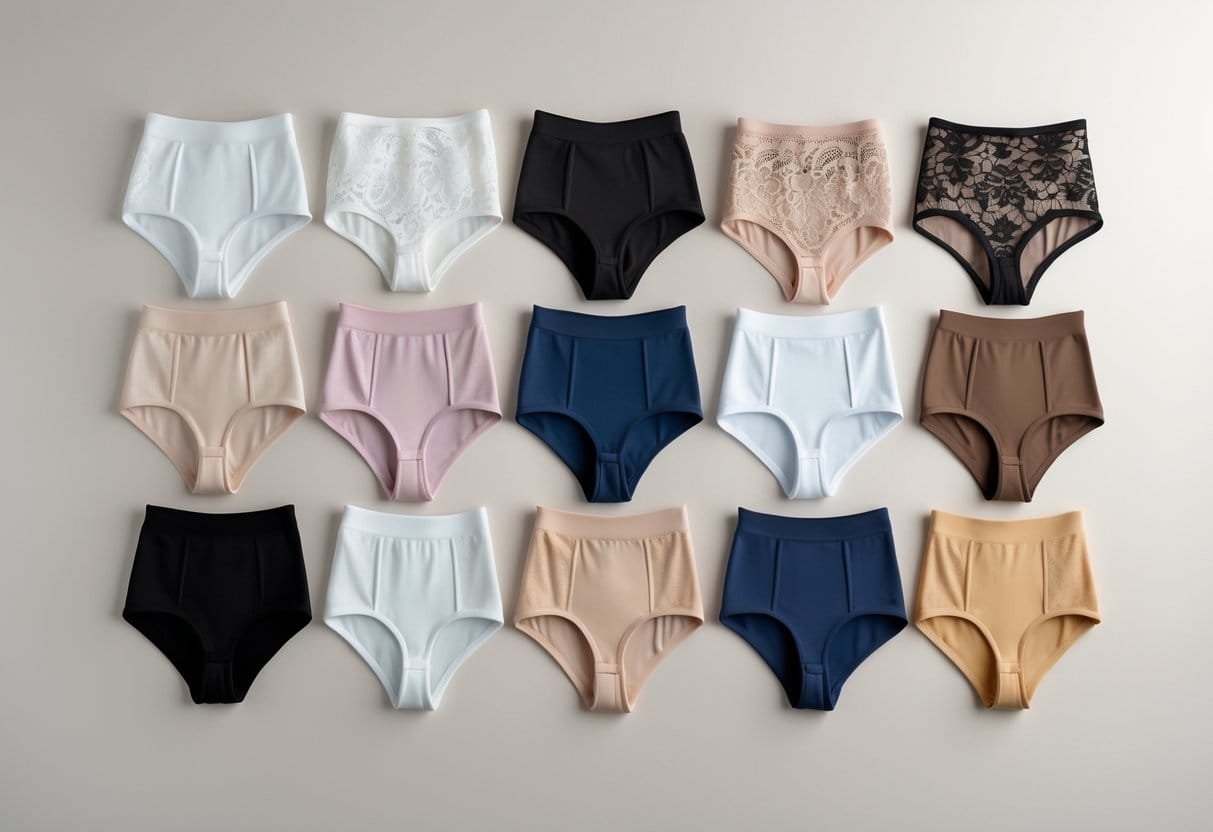
High-waist panties sit above the hips, often reaching the natural waistline. They provide more coverage than many other styles, making them a popular choice for those who want extra support.
These panties can help smooth the tummy area and create a sleek silhouette. They are often chosen for comfort and style, especially under high-waisted pants or skirts.
There are various types of high-waist panties, including high-waist briefs, bikinis, and even thongs. This style works well for many body shapes because of the added coverage and support it offers.
Many women appreciate high-waist panties because they combine vintage style with modern comfort. They can be made from different fabrics, such as cotton or lace, to suit different needs and occasions.
Overall, high-waist panties are a versatile and functional underwear option that blends support and fashion.
7) Hipsters

Hipster panties sit low on the hips, usually a few inches below the waistline. They offer moderate coverage in both the front and back, making them practical for everyday wear.
They are a popular choice because they blend comfort and style well. Hipsters work nicely under low-rise pants and jeans, helping avoid visible panty lines.
Many find hipsters flattering as they enhance natural curves without being too revealing. Their fit is versatile, suitable for various body shapes and clothing styles.
These panties provide enough coverage to feel secure while still maintaining a modern look. Their moderate cut makes them a common option in many women’s underwear collections.
8) Seamless Panties
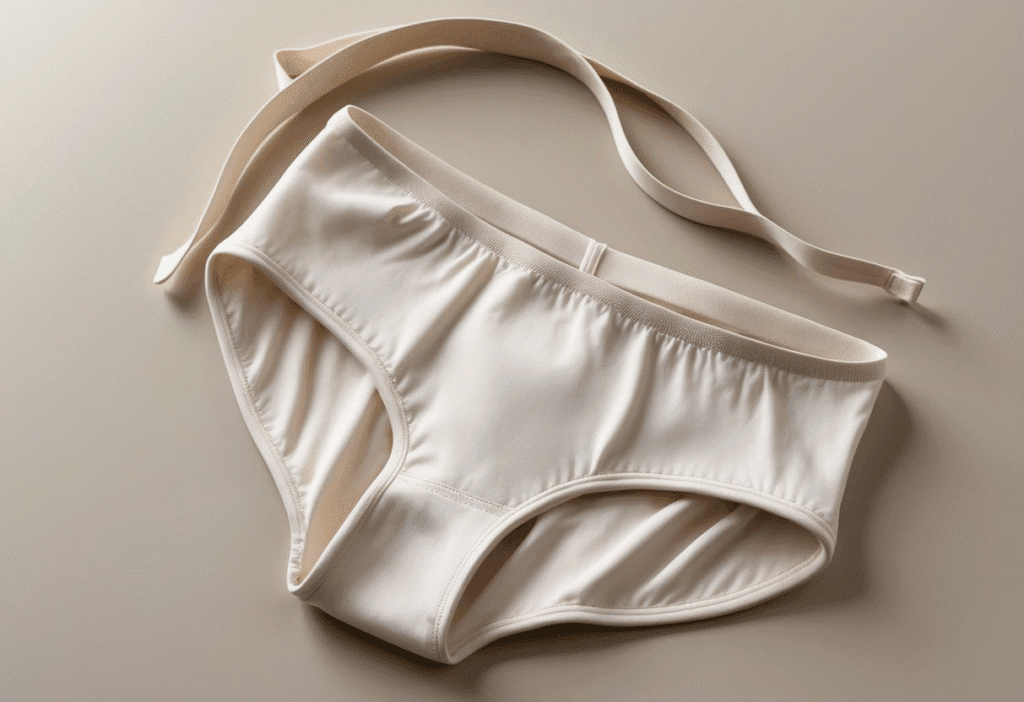
Seamless panties are designed without visible seams, making them ideal for wear under tight or thin clothing. They offer a smooth, clean look that avoids panty lines.
Many people choose seamless panties for comfort. Their soft fabric and construction reduce irritation and pressure. This makes them a popular option for daily wear and activities like exercise.
Seamless panties come in different styles, including briefs, thongs, and boyshorts. Each style provides varying coverage while maintaining the invisible look.
These panties work well under leggings, yoga pants, or body-hugging dresses. They help clothes fit better by staying hidden and preventing bunching.
Because of their comfort and no-show design, seamless panties have become a go-to choice for many. They combine function and subtlety without sacrificing style.
9) Control Briefs
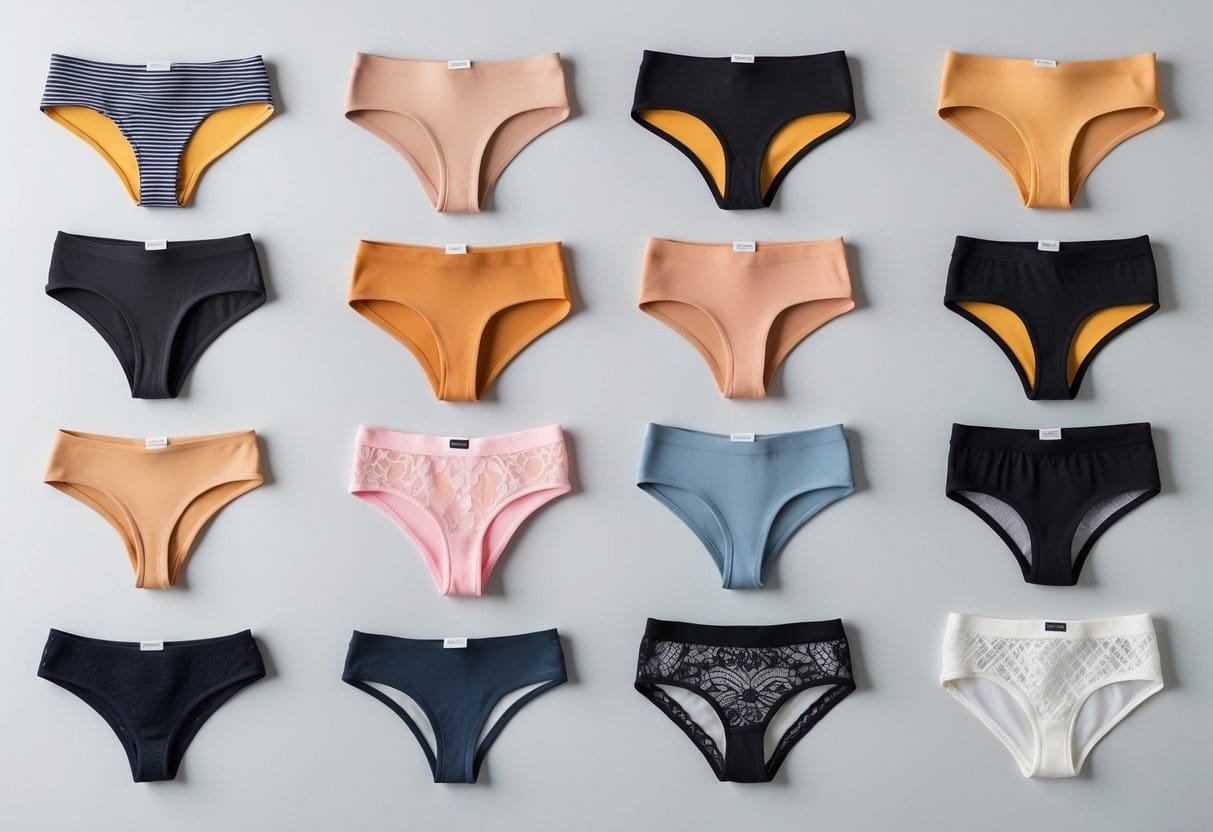
Control briefs are designed to provide extra support and shaping. They help smooth the stomach and waist area without feeling too tight or uncomfortable. Many people choose them to create a sleek look under clothes.
These panties usually offer full coverage and a higher waistband. This helps hold in the lower belly and sometimes lifts the hips or buttocks. They can be worn under dresses, skirts, or tighter pants for a clean silhouette.
Control briefs come in various fabrics. Some use stretchy materials like spandex for flexibility, while others have firmer panels for stronger shaping. They balance comfort with shaping needs, making them a popular choice for everyday wear or special occasions.
10) Cheeky Panties

Cheeky panties offer a mix of coverage and style. They sit between full-coverage underwear and thongs, showing more of the buttocks while still providing comfort. The cut is usually higher on the hips and lower on the waist.
They work well under tight clothing because they can reduce visible panty lines if designed with seamless edges. Cheeky panties often combine the features of thongs and hipsters, giving a flattering look without feeling too revealing.
Many cheeky panties come in soft, stretchy fabrics. They provide a balance between practical everyday wear and a more playful, flirty style. This makes them a popular choice for both comfort and appearance.
11) Cotton Panties

Cotton panties are made from natural cotton fabric. They are known for their breathability and softness. This makes them comfortable for everyday wear.
The fabric allows air to flow, which helps keep the skin dry. This reduces the risk of irritation and infections. Many women prefer cotton panties for this reason.
Cotton panties come in many styles, such as briefs, bikinis, and boyshorts. They work well in all seasons because cotton adapts to temperature changes.
They are easy to care for and durable. Cotton is a good choice for those with sensitive skin or allergies.
Overall, cotton panties balance comfort and practicality. They suit a wide range of body types and daily activities.
Choosing the Right Panty for You
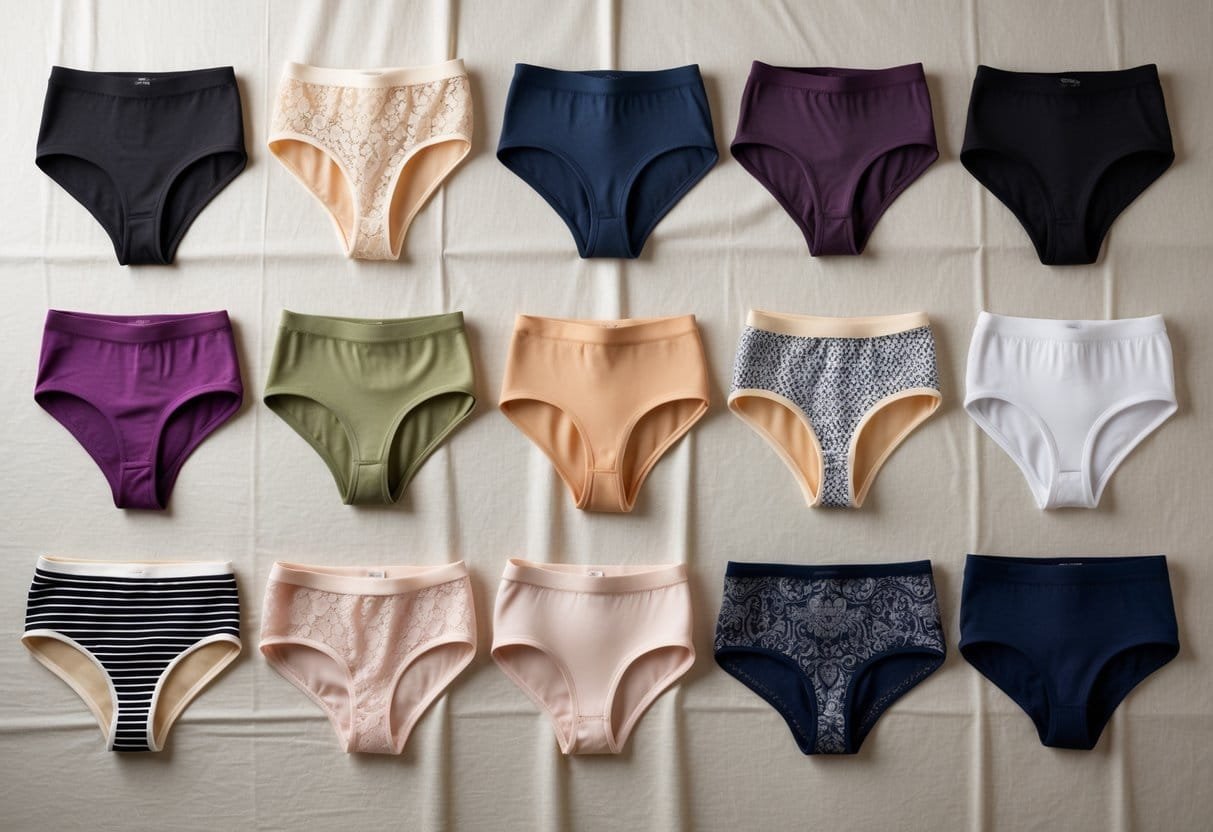
Finding the perfect panty means balancing style, comfort, and fit. It’s important to think about the fabric, cut, and how it fits on your body. This helps avoid discomfort and ensures confidence all day.
Factors to Consider for Comfort
Comfort depends on fabric, cut, and how the panty feels during movement. Breathable materials like cotton reduce moisture and irritation. Stretch fabrics offer flexibility but can vary in breathability.
The cut matters. Briefs provide full coverage and support. Bikinis and hipsters sit lower and suit casual wear. Thongs reduce visible panty lines but may take time to get used to.
Seams and waistbands affect comfort too. Soft, flat seams prevent chafing. Waistbands should fit snugly without digging into skin. Tags and embellishments can cause irritation, so some prefer seamless or tagless designs.
Sizing and Fit Recommendations
Correct size is essential for comfort and appearance. Too tight panties can cause marks and restrict movement. Too loose ones may shift or bunch up.
Measure the waist and hips using a tape measure. Follow sizing charts from trusted brands, as sizes differ between makers. If between sizes, choose the larger for comfort.
Trying panties on in different styles helps find what works best. Pay attention to how the panty sits on the waist and hips and whether it stays in place when moving.
| Tip | Description |
|---|---|
| Measure carefully | Waist and hips are key for a proper fit |
| Check brand sizing | Sizes can vary; always refer to brand charts |
| Aim for snug, not tight | Panties should fit firmly but not pinch |
| Test movement | Walk or sit to ensure the panty stays comfortable |
Panty Care and Maintenance
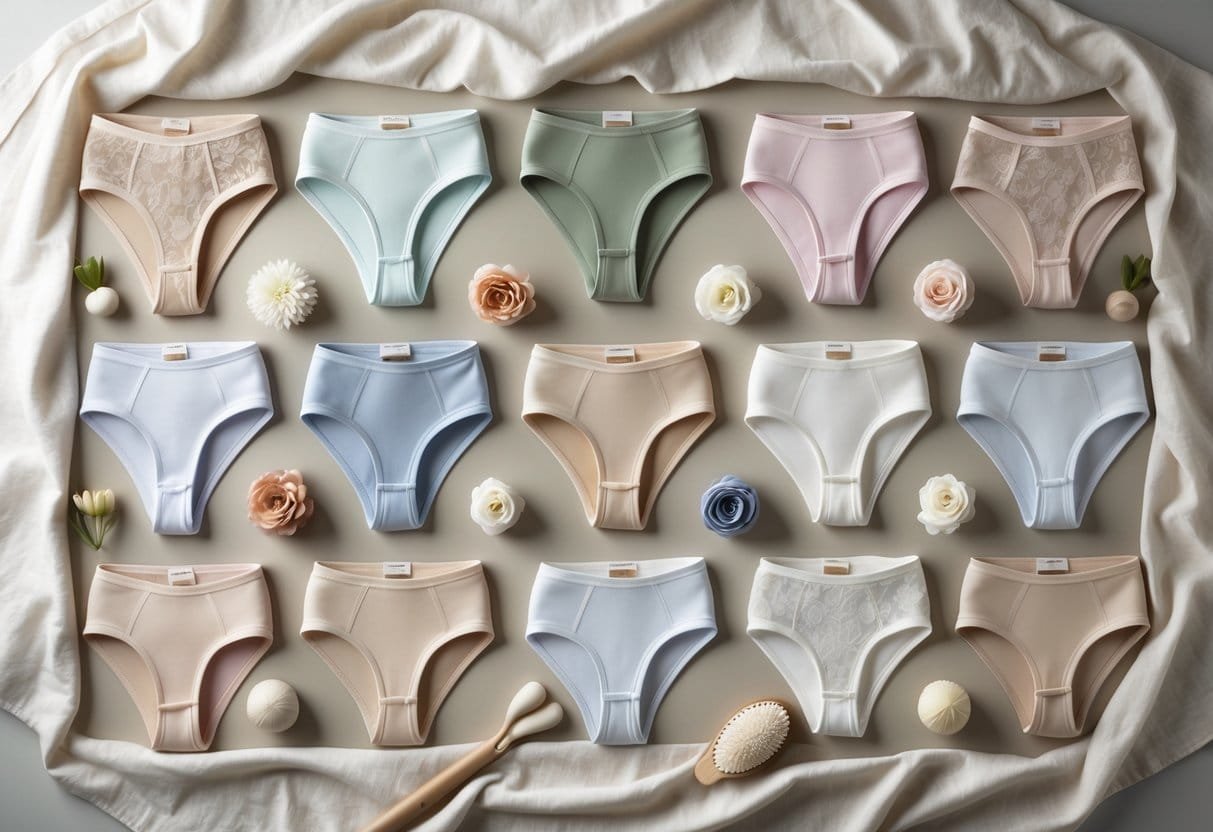
Proper care helps panties stay comfortable and last longer. It involves careful washing, drying, and storage to protect delicate fabrics and maintain fit.
Washing and Drying Tips
Panties should be washed with gentle detergent to avoid fabric damage. It’s best to use cold or lukewarm water, as hot water can shrink or weaken fabric fibers.
Hand washing is ideal, especially for lace or delicate materials. If using a machine, place panties in a mesh laundry bag to reduce stretching and snagging.
Avoid bleach and fabric softeners, which can break down elastic fibers. For drying, air drying flat or hanging helps keep shape and elasticity. Avoid tumble drying; heat can shrink panties and reduce lifespan.
Extending the Lifespan of Your Panties
To extend wear, rotate between multiple pairs. Wearing the same panties too often increases wear and tear.
Store panties folded or laid flat, not crumpled, to maintain shape. Keep delicate items separate from rough fabrics that may cause abrasion.
Avoid ironing panties, especially those with elastic or lace. Also, check care labels for fabric-specific instructions to preserve quality over time.
Frequently Asked Questions
Different types of panties vary in shape, coverage, and fit. Some have more fabric for comfort, while others are designed for minimal visibility under clothes.
What are the different styles of panties available for women?
Women can choose from several styles like briefs, bikini panties, boyshorts, thongs, and g-strings. Briefs offer full coverage, bikinis have moderate coverage with a low rise, boyshorts look like shorts and provide side coverage, thongs have minimal back fabric, and g-strings are even slimmer.
Can you provide examples of ladies’ underwear with their names and pictures?
Common examples include briefs, bikini panties, boyshorts, thongs, and g-strings. Visual aids typically show briefs as full coverage, bikinis as cut higher on hips, boyshorts covering hips fully, thongs with a thin back strip, and g-strings with just a string at the back.
What are the common materials used in making women’s panties?
Cotton is popular for breathability and comfort. Nylon, spandex, and polyester blends offer stretch and durability. Lace is often used for aesthetic appeal and a soft feel, while microfiber provides smoothness and moisture-wicking properties.
How do V-shaped panties differ from other styles?
V-shaped panties have a waistband that narrows into a V at the front. This design offers a unique silhouette and often sits lower on the hips compared to regular bikinis or briefs. They combine style with moderate coverage.
What lingerie styles are typically offered by popular brands like Victoria’s Secret?
Brands like Victoria’s Secret usually feature briefs, bikinis, boyshorts, thongs, and g-strings. Their collections often include lace, satin, and mesh materials, with styles aimed at both everyday comfort and special occasions.
What is the significance of C panties and how are they designed?
C panties refer to a style shaped like the letter “C” when viewed from the side. They generally offer minimal coverage with a sleek, modern look, designed to reduce panty lines and provide a sexy, fashionable option.


